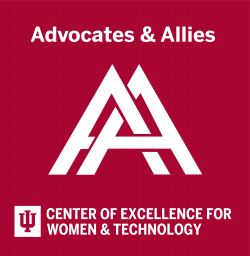Of the 20 million refugees living in a country outside their own,1 only 1% enroll in higher education compared to the global average of 36%.2 Recognizing that many must continue life without knowing when they can return home, we wanted to discuss how education is disrupted by displacement, what barriers face refugees in higher education, and how we can be more inclusive to the needs/experiences of people who are refugees. While little research has examined the intersectional experiences of displaced women,3,4 we must remember displacement and education are complicated by sexism.

Reflect: How Does Displacement Affect the Transition to Higher Education?
It can be hard to imagine being forced to flee to a completely different country due to unrest or conflict. In addition to other concerns about safety, living conditions, and resettlement, the process of becoming forcibly displaced causes untold disruption to educational pathways. Permanent resettlement is not as easily achieved because asylum can be a drawn-out administrative process that requires extended energy/resources and often separates families.5 This process can have significant effects on mental health, especially when transition does not occur smoothly.6 Women who enter the resettlement process face additional levels of stress as normal challenges are distilled into complex, gendered experiences of violence, health disparity, and discrimination.7 What long-lasting effects might this struggle have on someone’s ability to pursue higher education? In what ways can we honor the strength of displaced people who are trying to enter higher education?
Learn: Entering Higher Education as a Refugee
Accessing academic transcripts/identity documents, lacking funds, and insufficient understanding of the application processes are examples of barriers that prevent refugees from entering higher education. For the successfully enrolled, information gaps can disrupt access to vital support resources8 and refugee-specific programs may not address non-academic issues,9 such as food insecurity.10 People who have been forcibly displaced also experience cultural transitions, troubled by bias and exclusion. Racist assumptions about developing countries often lead faculty/staff to doubt refugee students’ ability to succeed.11 These attitudes influence how these students navigate their new bicultural identity. As they make sense of how their identities translate to a new context – such as differences in gender roles or what being “international” means – exclusionary comments about one’s country negatively affect sense of belonging.12 Women refugees experience these biases in addition to biases against women’s academic capabilities and high academic expectations13,14; these biases add to the stress and guilt that can come with trying to juggle education with being a primary caregiver.15, 16
Change:
- Discussion questions: Where do you see bias being perpetuated against refugees around you? What stereotypes do you have about refugees and/or how are your perceptions limited by biased views of refugee experiences? What ways can you become more considerate of refugee experiences and needs in your daily life?
- Challenge bias around accents/language: Depending on the recency of resettlement and their previous education, those who are refugees may have a varied grasp of English and/or have an accent.17 Dominant xenophobic/racist attitudes about language proficiency and academic ability often punish those who did not grow up learning English as their first language18,19; such social punishment can lead people to disengage from participating. Practice patience with those who did not learn English as their first language and make sure to emphasize that their contribution in meeting, classroom, and public spaces is valued. Additionally, if you hear someone make a comment about someone’s ability to speak English, call them in to talk about how they’re erasing the intelligence required to speak multiple languages and reinforcing linguistic racism.20
- Encourage collaboration and international perspectives: People with refugee backgrounds possess immense resilience as a result of their experiences.21 Create a space where the voices of refugees, especially refugee women, are leading the conversation about what displacement is like and how it affects their higher education career. Further, when people with refugee backgrounds can collaborate on shared projects, it can significantly impact their success in higher education – especially for women refugees, influencing persistence into graduate education and academia.22 These collaborations can take many forms, such as engaging in critical thinking about cultural differences, deeper satisfaction in one’s work, and soft skill development. Doing so can prevent an overly negative, dehumanizing narrative that paints displaced people as in need of saving and, instead, centers their voices.
Weekly Resource Recommendations
- Book: Refugees in Higher Education: Debate, Discourse, and Practice – Through the lens of three displaced people who navigated higher education, Stevenson and Baker examine barriers to supporting students who are refugees in higher education.
- Video: A Journey of Purpose: From Refugee Camp to University – Rhoda Philip discusses her experiences with displacement and her path toward higher education.
- Article: A Push to Bring Refugees to College – Eric Hoover explores programs that are pushing to help refugee students transition to college in the United States.
- Podcast: One Refugee – This short podcast series revolves around seven college students exploring their experiences as refugees in higher education.
Get these tips delivered to your mailbox!
We send these tips every Tuesday during the fall & spring semesters to our mailing list. If you are not already on our mailing list you can request to be added by completing the form below.

